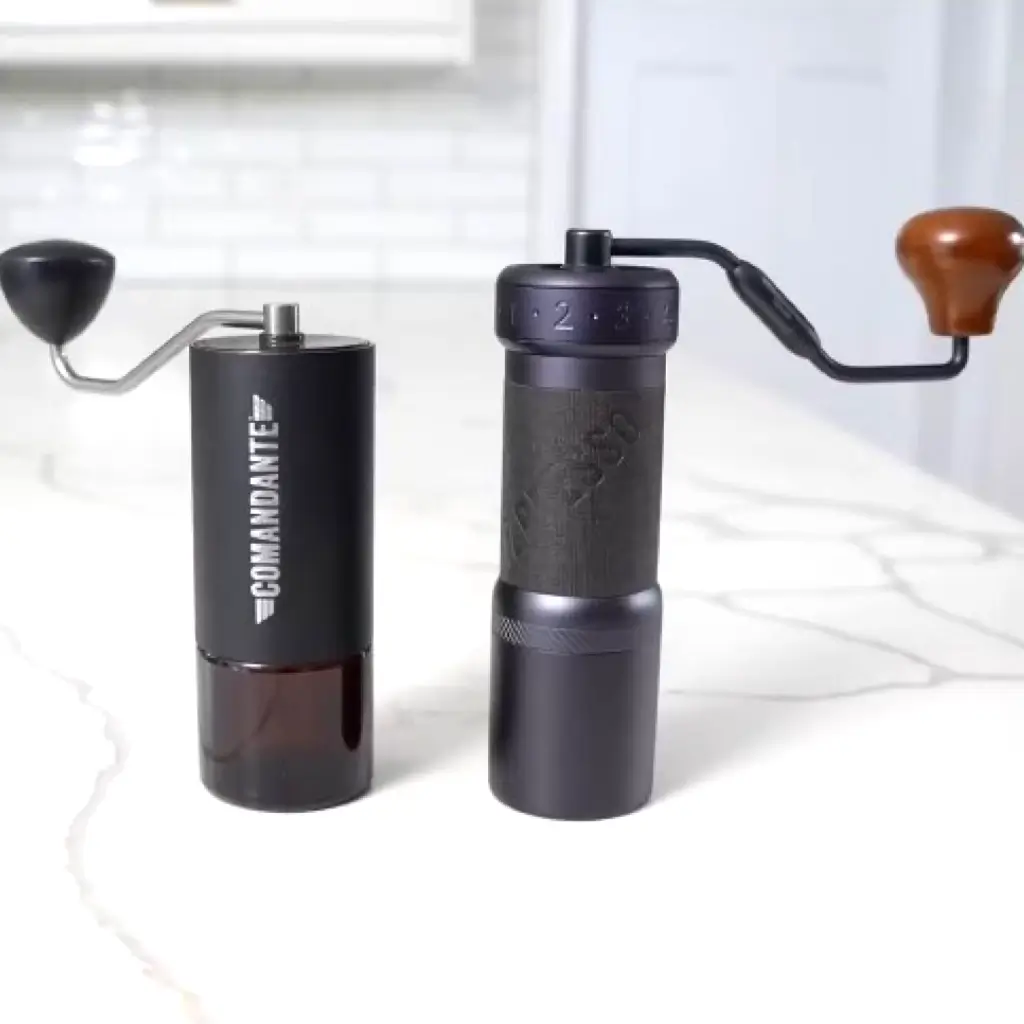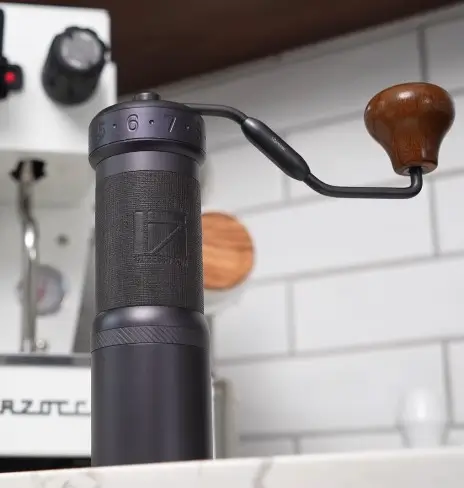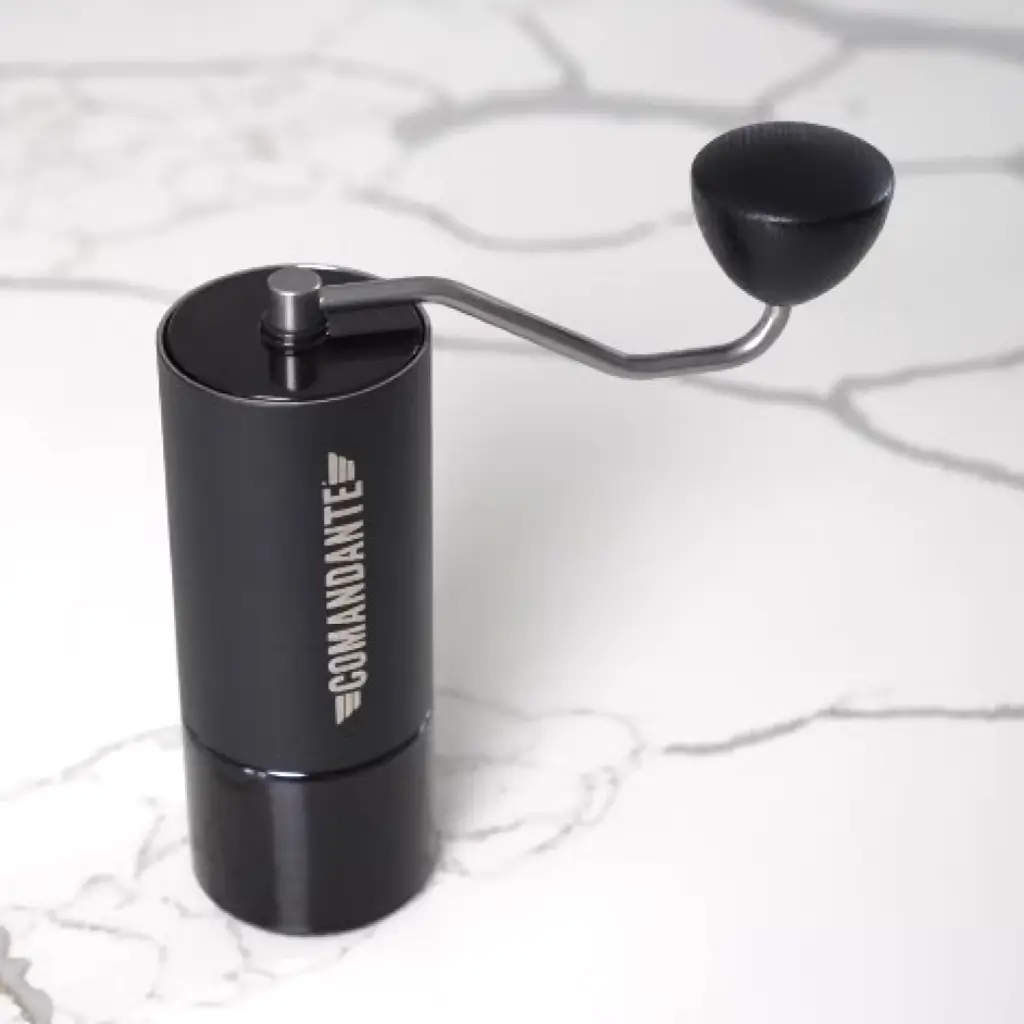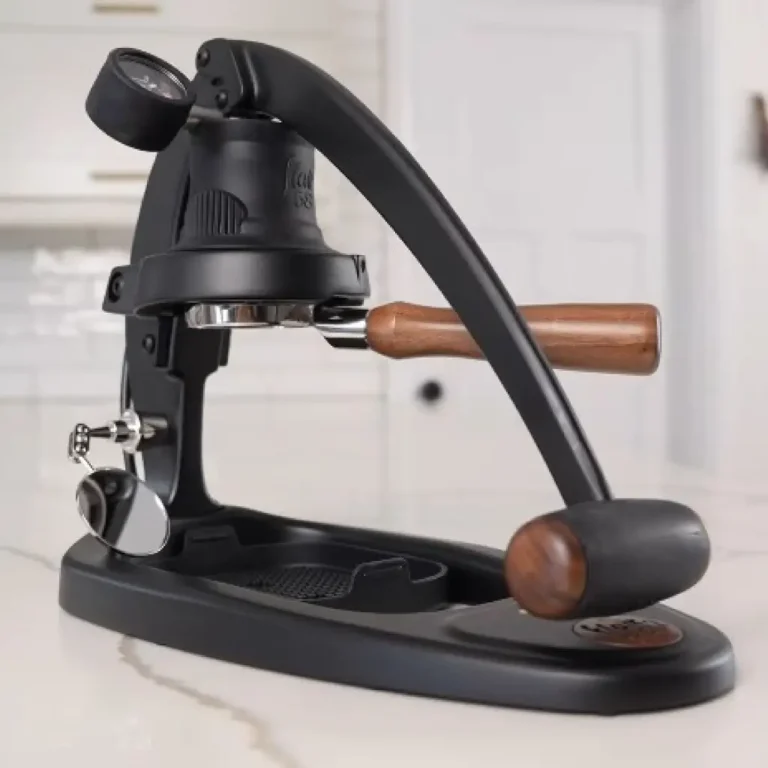Manual Coffee Grinder Guide: 8 Best Hand Grinders for 2025

Introduction: Liberating the Soul of Your Coffee (The Power of the Hand Grind)
You know that moment when you take your first sip of coffee and something just clicks? That’s not magic—it’s what happens when you’ve unlocked the true essence of your beans. And here’s the thing: great coffee doesn’t start in your cup. It starts the second you grind those beans.
I’ve been down the rabbit hole of coffee gear for years, and I’ll tell you straight up—most grinders are lying to you. They promise consistency but deliver a chaotic mix of boulders and dust. Your pour over tastes bitter and thin? Your espresso shot channels like crazy? Blame the grind, friend.
But here’s where it gets exciting. Modern manual coffee grinders have completely changed the game. We’re talking about hand grinders that deliver particle uniformity rivaling $500+ electric monsters, all while you’re in complete control of the ritual. Through hands-on testing with particle analysis tools, refractometers, and honestly just grinding thousands of doses, I’ve discovered which hand grinders genuinely deliver on their promises.
Whether you’re hunting for the perfect espresso grinder, a reliable pour over grinder, or something you can toss in your backpack, this guide covers everything you need. We’ll dive deep into flagships like the 1Zpresso K-Ultra, the legendary Comandante C40, and budget champions that punch way above their weight class.
Quick Picks: Our Expert Recommendations at a Glance
Let me save you some scrolling. Here are my top picks based on rigorous testing:
| Grinder | Best For | Key Feature Highlight | Price Range |
|---|---|---|---|
| 1Zpresso K-Ultra | Best Overall & All-Rounder | Intuitive external adjustment dial, superb consistency for all methods | Premium ($259) |
| 1Zpresso J-Ultra | Best for Espresso Precision | Hyper-fine 8-micron adjustments, thick, sweet, textured shots | Premium ($199) |
| Comandante C40 MK4 | Best Premium/Heirloom Quality | Benchmark Nitro Blade burr geometry, highly durable, elegant flavor profile | Luxury ($296) |
| MHW-3Bomber R3 Blade | Best Budget Workhorse/Value | Flagship features (magnetic catch cup, external adjustment) at a budget price | Budget ($109) |
| 1Zpresso Q Air | Best Ultra-Portable & Budget Travel | Lightweight (360g), fits inside an AeroPress plunger, high cup quality for price | Entry-Level($69) |
The Manual Advantage: Why Choose a Hand Grinder Over Electric?
Look, I get it. Electric grinders seem convenient. Push a button, walk away, done. But hear me out—there’s a reason the specialty coffee community is obsessed with manual coffee grinders, and it’s not just nostalgia.
Unmatched Grind Consistency for the Price Point
This one blows people’s minds. A $200 manual coffee grinder will outperform most electric grinders under $400. Why? Because manual grinder manufacturers aren’t spending money on motors, electronics, or timers. They’re channeling everything into precision burrs and rock-solid construction.
Premium hand grinders achieve particle distribution uniformity that rivals commercial-grade equipment. When I measured the fines and boulders from my 1Zpresso J-Ultra against a $600 electric grinder, the results were almost identical. That’s insane value.
Zero Heat Generation and Superior Flavor Preservation
Here’s something most people don’t realize: electric grinders generate heat. Sometimes a lot of heat. Those high-speed motors and rapidly spinning burrs create friction, and friction means temperature spikes that can literally cook your coffee’s delicate aromatics.
Manual grinding is slower and gentler. You’re preserving those volatile flavor compounds—the fruity notes in your Ethiopian natural, the caramel sweetness in your Colombian beans. With a hand grinder, what you smell in the bag is what you’ll taste in the cup.
Durability, Portability, and Quiet Operation
Manual coffee grinders are built like tanks. We’re talking aerospace-grade aluminum, precision-machined stainless steel burrs, and basically zero points of failure. No motors to burn out, no circuit boards to fry. My Comandante? Still grinding perfectly after five years.
Portability is huge too. Whether you’re camping in the mountains, staying in a hotel, or just brewing at your office, a hand grinder goes wherever you do. And here’s a bonus—they’re whisper-quiet. No more waking up the entire house at 6 AM just to make coffee.
Optimized for Single Dosing and Zero Retention
The specialty coffee world has embraced single dosing—grinding only what you need, when you need it. Manual grinders are inherently perfect for this approach. You toss in 18 grams, you get 18 grams out. Minimal retention means every shot tastes fresh, not like yesterday’s stale grounds.
The Buying Checklist: 5 Crucial Features to Consider
Before you drop your hard-earned cash on a manual coffee grinder, let’s talk about what actually matters.
Burr Material: Steel is the New Standard
Not all burrs are created equal, and this is where budget grinders often cut corners.
Ceramic vs. Steel: Older grinders like the Hario Skerton Pro and Porlex Mini use ceramic burrs. They’re cheap, they stay sharp forever, and they generate minimal heat. Sounds great, right? The problem is they’re significantly slower and less consistent, especially at finer espresso settings.
Steel burrs—whether stainless steel, Nitro Blade, or specialized alloys like S2C—are sharper, faster, and dramatically more consistent. The 1Zpresso line uses stainless steel burrs that absolutely demolish ceramic competition. For espresso especially, steel is non-negotiable.
Burr Geometry: Different burr designs create different flavor profiles. The ZP6 burrs in some 1Zpresso models emphasize clarity and are amazing for light roasts. The J-Ultra burrs enhance body and texture, perfect for espresso. The Comandante’s Nitro Blade geometry is the Swiss Army knife—excellent at everything.
Grind Adjustment Mechanism and Precision (Microns)
This is where espresso enthusiasts need to pay serious attention.
Precision is Key: Espresso demands fine adjustments. The difference between sour and sweet can be 10 microns. The 1Zpresso J-Ultra features 8-micron clicks—that’s incredibly precise. The Kinu M47 Simplicity goes stepless, giving you infinite adjustment within its range.
For pour over and French press? You don’t need as much precision, but finer adjustments still help you dial in the perfect extraction.
Convenience Matters: External adjustment (like the K-Ultra and R3 Blade) is a game-changer. You can switch from espresso to pour over in seconds without disassembling anything. Internal adjustment systems (Timemore C2s, Porlex Mini) mean you’re unscrewing the bottom, turning something inside, hoping you remembered the right position. It gets old fast.
Ergonomics and Bearings for Effortless Grinding
Here’s a dirty secret: cheap manual coffee grinders can feel like an arm workout. Premium models? Smooth as butter.
The difference is bearings. Budget grinders use a simple bushing—basically the shaft rubbing directly against the body. High-end hand grinders use dual or triple ball bearings that eliminate friction and wobble. The result is effortless grinding that won’t leave your arm sore.
Handle design matters too. A slightly bent or longer handle provides better leverage, making the grinding motion feel natural rather than forced.
Capacity vs. Portability
Think about how you’ll actually use your manual coffee grinder.
Travel grinders like the Porlex Mini or 1Zpresso Q Air hold 15-25 grams and fit inside an AeroPress. Perfect for backpacking but limiting if you’re brewing for two.
Home models like the Comandante (40g capacity) or Hario Skerton Pro (100g hopper) suit larger doses and batch brewing. The tradeoff? They’re bulkier and won’t slip into your carry-on as easily.
Construction and User Experience (UX)
Modern hand grinders have seriously upped their UX game. Look for:
- Magnetic catch cups (K-Ultra, R3 Blade, J-Ultra) that snap on and off versus threaded jars you have to carefully unscrew
- Durable materials like aluminum alloy or stainless steel construction
- Clear markings on the adjustment dial so you can return to your favorite settings
- Stable grinding with anti-slip bases or grips
These details might seem minor, but they transform your daily routine from tedious to enjoyable.
The Top-Tier Manual Grinder Reviews (2025 Flagships)
Let’s get into the heavy hitters—the manual coffee grinders that set the standard for excellence.
1Zpresso K-Ultra: The Ultimate All-Rounder

If I could only recommend one manual coffee grinder, this would be it. The K-Ultra is what happens when a company listens to user feedback and executes flawlessly.
What Makes It Special: The external adjustment dial is perfectly positioned and intuitive. The magnetic catch cup snaps satisfyingly into place. The 48mm stainless steel burrs deliver exceptional consistency across the entire grind spectrum—from Turkish fine to cold brew coarse.
Performance: This thing is fast. I timed 15 grams for pour over at 23-28 seconds. The grind quality is stellar, especially with light to medium roasts where it brings out layered complexity and bright acidity.
Who It’s For: Home brewers who make espresso, pour over, and everything in between. The K-Ultra handles method-hopping better than any other hand grinder I’ve tested.
1Zpresso J-Ultra: Precision Engineered for Espresso
Espresso people, this one’s for you. The J-Ultra is obsessively focused on one thing: pulling god shots.
What Makes It Special: Those 8-micron adjustment clicks give you microscopic control over extraction. When you’re dialing in a new bean and need to make tiny tweaks, this precision is invaluable. The burr geometry enhances body and sweetness.
Performance: I consistently pull balanced, syrupy shots with incredible texture. The thick crema, the velvety mouthfeel, the lingering sweetness—it’s all there. Grinding 16-18 grams takes 40-55 seconds, which is reasonable considering you’re approaching espresso fineness.
Who It’s For: Serious espresso enthusiasts and home baristas who want commercial-grade shot quality without spending commercial-grade money.
Comandante C40 MK4 Nitro Blade: The Enduring Classic

The Comandante is like the Porsche 911 of manual coffee grinders—it’s been around forever, and it just keeps getting better.
What Makes It Special: The Nitro Blade high-nitrogen steel burrs are legendary. The build quality is heirloom-level—this grinder will outlive you. The flavor profile it produces is exceptionally clean and balanced, working beautifully with any brew method.
Performance: Grinding is smooth and relatively quick (40-50 seconds for 20g medium grind). The consistency is benchmark-level, which is why coffee professionals use it as a reference point.
The Catch: For espresso, you’ll want the optional Red Clix modification, which doubles the grind settings to 15 microns per click. Without it, the 30-micron clicks are a bit too coarse for precise espresso dialing.
Who It’s For: Coffee lovers who appreciate craftsmanship and want a grinder that’ll last decades. Also great for those who primarily brew filter coffee but occasionally dabble in espresso.
The Best Value & Budget Manual Grinders
Premium gear is great, but not everyone’s ready to drop $200+ on a hand grinder. These budget options deliver impressive performance without breaking the bank.
MHW-3Bomber R3 Blade: Flagship Features on a Budget
This is the manual coffee grinder that made me rethink what “budget” means. The R3 Blade brings features usually reserved for premium models to an accessible price point.
What Makes It Special: External adjustment? Check. Magnetic catch cup? Check. Consistent stainless steel burrs? Check. The R3 Blade feels like it should cost twice what it does.
Performance: The grind quality is genuinely good—not just “good for the price.” It smooths out harsh edges in darker roasts while maintaining clarity in lighter ones. The flavor profile sits between traditional and modern, which is versatile.
Who It’s For: Anyone who wants a quality manual coffee grinder without premium pricing. Perfect first serious grinder.
Timemore Chestnut C2/C2s: Entry-Level Excellence
The Timemore C2 has been a gateway grinder for thousands of coffee enthusiasts, and for good reason.
What Makes It Special: It’s affordable, well-built, and fast. The 38mm stainless steel burrs punch above their weight class, delivering solid consistency for filter coffee methods.
The Limitations: The stepped adjustment is too coarse for espresso work—you’ll end up between settings. The internal adjustment system means you’re unscrewing the bottom every time you want to change grind size.
Who It’s For: Pour over and French press brewers on a budget. Skip this if espresso is your main focus.
1Zpresso Q Air: The Lightweight Travel Champion
The Q Air is proof that travel-sized doesn’t mean compromised quality.
What Makes It Special: At just 360 grams, it’s absurdly light. It fits inside an AeroPress plunger, making it the ultimate travel companion. But here’s the kicker—it still delivers 1Zpresso-quality grinding.
Performance: For an entry-level manual coffee grinder, the cup quality is impressive. It’s capable enough for espresso in a pinch, though not as refined as the J-Ultra.
Who It’s For: Digital nomads, campers, and anyone who needs portable coffee excellence without the weight penalty.
Ultimate Performance Comparison Chart
Here’s how the top manual coffee grinders stack up side by side:
| Grinder | Burr Material | Capacity (g) | Grind Adjustment | Espresso Suitability | Time for 20g (Medium) |
|---|---|---|---|---|---|
| 1Zpresso J-Ultra | 48mm Stainless Steel | 35-40g | 8 µm/click, External | Excellent | 40-55s (16-18g espresso) |
| Comandante C40 MK4 | Nitro Blade Steel | 40g | 35 Stepped (30 µm/click) | Good (Better with Red Clix) | 40-50s |
| Kinu M47 Simplicity | 47mm Stainless Steel | 40-50g | Stepless (~5 µm) | Excellent (Workhorse) | ~45s (18g espresso) |
| 1Zpresso K-Ultra | 48mm Stainless Steel | 35-40g | External, Fine Steps | Excellent | 23-28s |
| Timemore C2 | 38mm Stainless Steel | 25g | Stepped (~36 internal steps) | Poor (Steps too big) | ~30s |
| Porlex Mini | Ceramic Conical | 20g | Stepped (Internal) | Acceptable | ~47s |
Grinders That Have Been Dethroned in 2025
Not all manual coffee grinders age gracefully. Here’s what used to be popular but has been surpassed by better options.
Ceramic Burrs are Outmatched
The Hario Skerton Pro, Hario Mini Slim, and original Porlex models were once go-to recommendations. But the explosion of affordable steel-burr grinders has left them in the dust.
Ceramic simply can’t match the consistency and speed of modern steel burrs. Unless you’re specifically grinding for very coarse methods like cold brew, there’s no compelling reason to choose ceramic anymore.
Dated UX and Internal Adjustment
First-generation models like the original 1Zpresso J and Q2 feel clunky compared to modern designs. Internal adjustment systems that require partial disassembly are frustrating when you’re switching between brew methods.
The R3 Blade and Q Air offer better features at similar or lower prices, making these older models hard to justify.
Bulky and Cumbersome Design
The Kinu M47 Phoenix and Lido 3 are powerful grinders with large burrs and impressive build quality. But they’re also heavy, bulky, and have adjustment mechanisms that feel dated. The Phoenix’s catch cup is notoriously fragile.
Modern alternatives like the K-Ultra or Comandante offer similar performance in more elegant, user-friendly packages.
Essential Maintenance: Keeping Your Grinder Performing
A manual coffee grinder is an investment. Here’s how to keep it grinding perfectly for years.
1. Cleaning Frequency: Give your grinder a quick brush-out every few uses. Perform a full disassembly and deep clean every month or after going through 3-4 pounds of coffee.
2. Disassembly and Brushing: Most hand grinders are designed to come apart easily. Use a small brush (a soft toothbrush works great) to remove grounds and coffee oils from the burrs. Avoid water on metal parts unless the manufacturer specifically says it’s okay—you don’t want rust.
3. Preventing Static (RDT): Static cling is the bane of manual grinding. Use the Ross Droplet Technique—add one or two tiny drops of water to your beans before grinding. This simple trick dramatically reduces static and mess without affecting flavor.
4. Storage: Keep your manual coffee grinder in a dry place. If you’re storing it long-term, clean it thoroughly first to prevent coffee oils from going rancid.
Frequently Asked Questions (FAQs)
Is a manual coffee grinder worth the effort?
Absolutely, especially if you care about coffee quality. The “effort” is about 30-60 seconds of grinding—barely more time than it takes an electric grinder to do the same job. What you gain is superior consistency, better flavor preservation, portability, and quiet operation. For most enthusiasts, it’s not effort—it’s a satisfying ritual.
Are ceramic or steel burrs better for manual grinders?
Steel burrs win for consistency, speed, and espresso capability. Ceramic burrs are durable and generate slightly less heat, but they’re slower and less precise. Unless you’re on an extremely tight budget, go with steel.
How long does it typically take to grind a cup of coffee?
With a quality manual coffee grinder, expect 30-60 seconds for a single cup at medium grind. Flagship models like the K-Ultra can be even faster. Espresso takes longer (40-60 seconds) because you’re grinding finer. Entry-level ceramic grinders can take up to 2 minutes, which gets tedious.
Can hand grinders truly compete with electric espresso grinders?
Yes, and this surprises people. Premium manual coffee grinders like the J-Ultra or Kinu M47 Simplicity deliver grind precision that rivals $500+ electric grinders. The micron-level adjustments let you dial in shots with commercial-grade accuracy. The only real limitation is speed—you can’t grind back-to-back shots as quickly as electric.
Conclusion: Your Next Step to Perfect Extraction
Choosing the right manual coffee grinder is about more than just gear—it’s a commitment to better coffee and a more mindful morning ritual. Whether you’re chasing the perfect espresso shot with a J-Ultra, enjoying the versatility of a K-Ultra, or traveling light with a Q Air, the right hand grinder will transform your coffee game.
Here’s the beautiful thing: you don’t need to overthink this. Any quality burr grinder puts you ahead of 98% of coffee drinkers. You’ll immediately taste the difference in sweetness, balance, and clarity. The ritual of hand grinding connects you to your coffee in a way that pushing a button never will.
So what’s your brewing style? Are you team espresso, pour over devotee, or an everything-everywhere kind of coffee person? Drop a comment below with your preferred brew method and which manual coffee grinder you’re considering. I’d love to hear what resonates with you.
Now go forth and grind with intention, friends. Your best cup is waiting.

